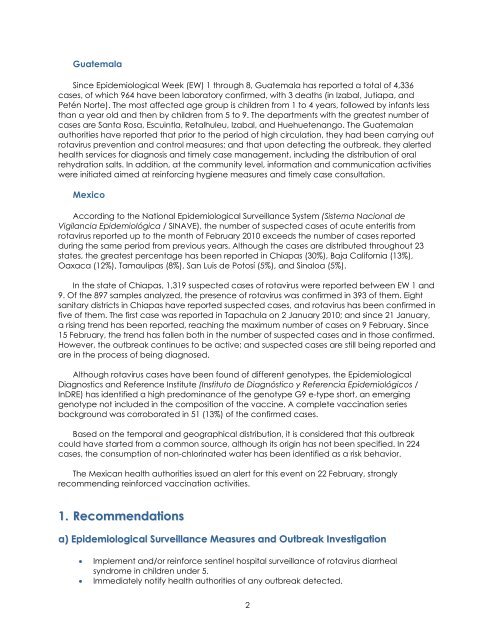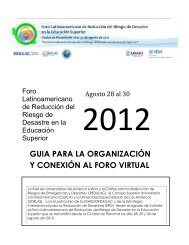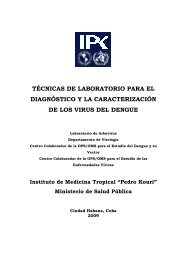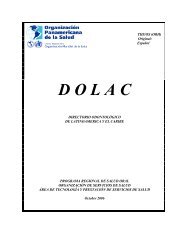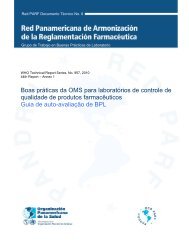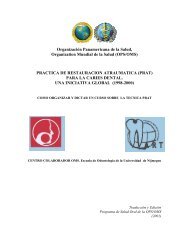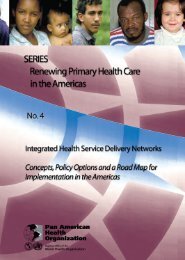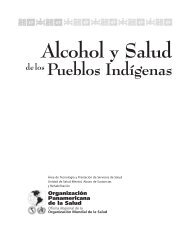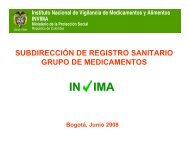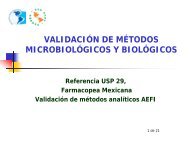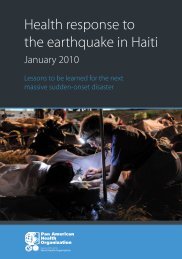Epidemiological Alert: Rotavirus Diarrheal Syndrome
Epidemiological Alert: Rotavirus Diarrheal Syndrome
Epidemiological Alert: Rotavirus Diarrheal Syndrome
You also want an ePaper? Increase the reach of your titles
YUMPU automatically turns print PDFs into web optimized ePapers that Google loves.
GuatemalaSince <strong>Epidemiological</strong> Week (EW) 1 through 8, Guatemala has reported a total of 4,336cases, of which 964 have been laboratory confirmed, with 3 deaths (in Izabal, Jutiapa, andPetén Norte). The most affected age group is children from 1 to 4 years, followed by infants lessthan a year old and then by children from 5 to 9. The departments with the greatest number ofcases are Santa Rosa, Escuintla, Retalhuleu, Izabal, and Huehuetenango. The Guatemalanauthorities have reported that prior to the period of high circulation, they had been carrying outrotavirus prevention and control measures; and that upon detecting the outbreak, they alertedhealth services for diagnosis and timely case management, including the distribution of oralrehydration salts. In addition, at the community level, information and communication activitieswere initiated aimed at reinforcing hygiene measures and timely case consultation.MexicoAccording to the National <strong>Epidemiological</strong> Surveillance System (Sistema Nacional deVigilancia Epidemiológica / SINAVE), the number of suspected cases of acute enteritis fromrotavirus reported up to the month of February 2010 exceeds the number of cases reportedduring the same period from previous years. Although the cases are distributed throughout 23states, the greatest percentage has been reported in Chiapas (30%), Baja California (13%),Oaxaca (12%), Tamaulipas (8%), San Luis de Potosí (5%), and Sinaloa (5%).In the state of Chiapas, 1,319 suspected cases of rotavirus were reported between EW 1 and9. Of the 897 samples analyzed, the presence of rotavirus was confirmed in 393 of them. Eightsanitary districts in Chiapas have reported suspected cases, and rotavirus has been confirmed infive of them. The first case was reported in Tapachula on 2 January 2010; and since 21 January,a rising trend has been reported, reaching the maximum number of cases on 9 February. Since15 February, the trend has fallen both in the number of suspected cases and in those confirmed.However, the outbreak continues to be active; and suspected cases are still being reported andare in the process of being diagnosed.Although rotavirus cases have been found of different genotypes, the <strong>Epidemiological</strong>Diagnostics and Reference Institute (Instituto de Diagnóstico y Referencia Epidemiológicos /InDRE) has identified a high predominance of the genotype G9 e-type short, an emerginggenotype not included in the composition of the vaccine. A complete vaccination seriesbackground was corroborated in 51 (13%) of the confirmed cases.Based on the temporal and geographical distribution, it is considered that this outbreakcould have started from a common source, although its origin has not been specified. In 224cases, the consumption of non-chlorinated water has been identified as a risk behavior.The Mexican health authorities issued an alert for this event on 22 February, stronglyrecommending reinforced vaccination activities.1. Recommendationsa) <strong>Epidemiological</strong> Surveillance Measures and Outbreak Investigation• Implement and/or reinforce sentinel hospital surveillance of rotavirus diarrhealsyndrome in children under 5.• Immediately notify health authorities of any outbreak detected.2


